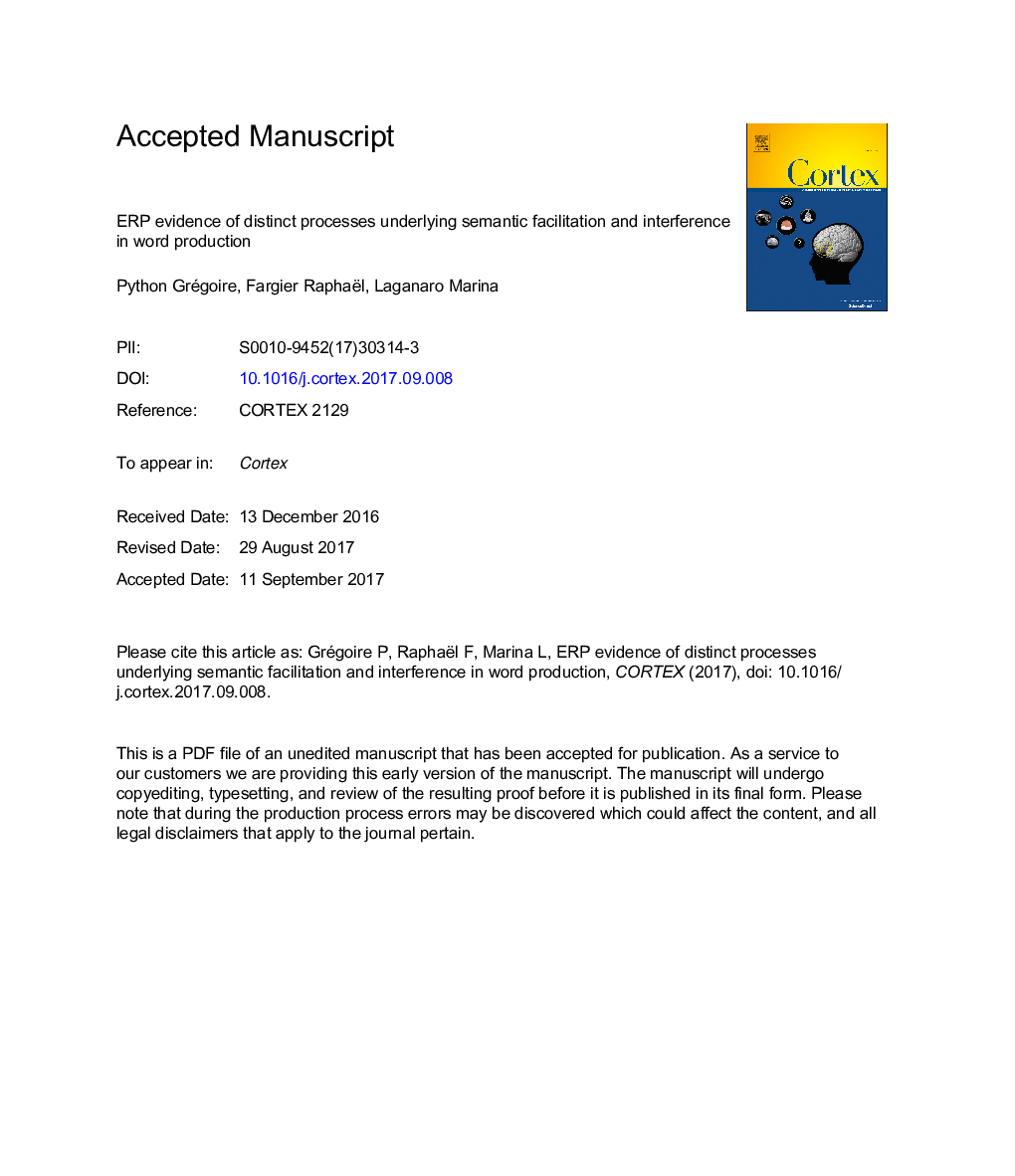| Article ID | Journal | Published Year | Pages | File Type |
|---|---|---|---|---|
| 7311847 | Cortex | 2018 | 33 Pages |
Abstract
In everyday conversations, we take advantage of lexical-semantic contexts to facilitate speech production, but at the same time, we also have to reduce interference and inhibit semantic competitors. The blocked cyclic naming paradigm (BCNP) has been used to investigate such context effects. Typical results on production latencies showed semantic facilitation (or no effect) during the first presentation cycle, and interference emerging in subsequent cycles. Even if semantic contexts might be just as facilitative as interfering, previous BCNP studies focused on interference, which was interpreted as reflecting lemma selection and self-monitoring processes. Facilitation in the first cycle was rarely considered/analysed, although it potentially informs on word production to the same extent as interference. Here we contrasted the event-related potential (ERP) signatures of both semantic facilitation and interference in a BCNP. ERPs differed between homogeneous and heterogeneous blocks from about 365â¯msec post picture onset in the first cycle (facilitation) and in an earlier time-window (270â¯msec post picture onset) in the third cycle (interference). Three different analyses of the ERPs converge towards distinct processes underlying semantic facilitation and interference (post-lexical vs lexical respectively). The loci of semantic facilitation and interference are interpreted in the context of different theoretical frameworks of language production: the post-lexical locus of semantic facilitation involves interactive phonological-semantic processes and/or self-monitoring, whereas the lexical locus of semantic interference is in line with selection through increased lexical competition.
Related Topics
Life Sciences
Neuroscience
Behavioral Neuroscience
Authors
Grégoire Python, Raphaël Fargier, Marina Laganaro,
